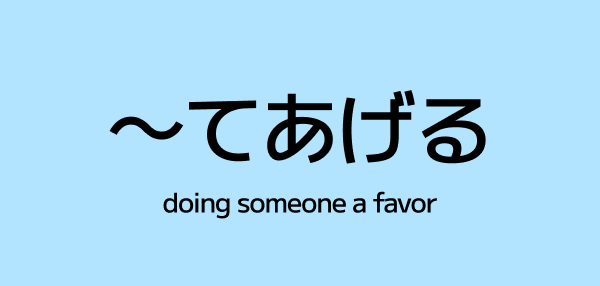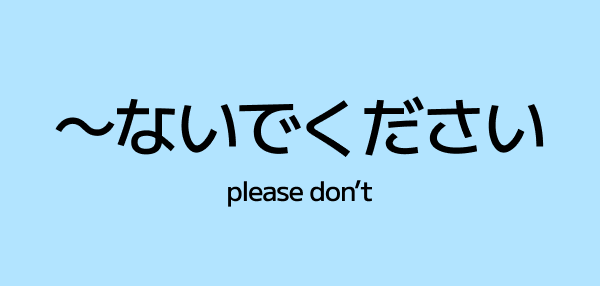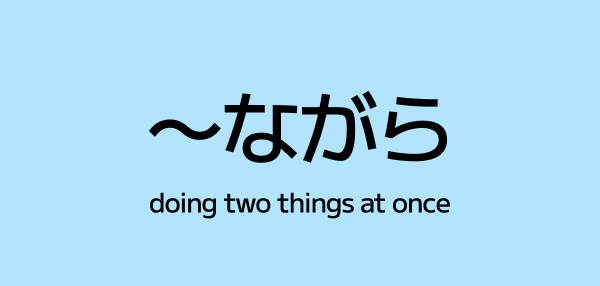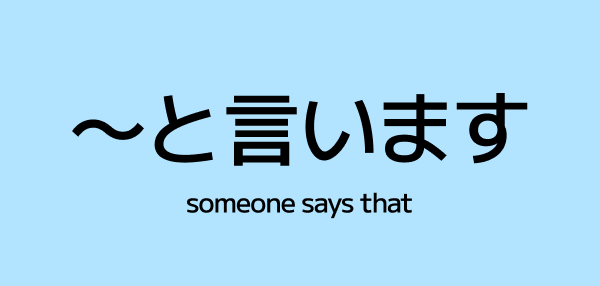~てあげる (te ageru) – How to Say “Do Something for Someone” in Japanese

In English, you might say:
- “I helped my friend with homework.”
- “I held the door for her.”
- “I made dinner for him.”
In Japanese, when you do something for someone else’s benefit, you use ~てあげる.
In this guide, you’ll learn:
- What ~てあげるmeans and how it works
- How to use it (and when not to)
- The polite version ~てさしあげるand what it means culturally
Here's a quick Hatsune Miku song that this reminds us of before we get started 🤭みくみくにしてあげる♪
What Does ~てあげるMean?
~てあげる means “to do something for someone” — when you perform an action that benefits someone else.
It combines:
- The ~てform of a verb +
- The verb あげる (“to give”)
So literally, you’re “giving” the act of doing something.
Sentence Structure
[Person / Relationship]の[thing or action]を+ Verb(て-form) +あげる
You can also use ~のために (“for the sake of”) when you want to emphasize that the action was done for their benefit.
Examples
- 友だちの宿題を手伝ってあげました。 → I helped my friend with homework.
- 妹の引っ越しを手伝ってあげました。 → I helped my little sister move.
- お母さんの荷物を持ってあげました。 → I carried the bag for my mom.
- おばあさんのためにドアをあけてあげました。 → I opened the door for the elderly woman.
You can switch to あげます for polite speech, or あげた/あげようか depending on tense and tone.
Who’s Giving and Who’s Receiving?
This grammar only works when:
- You (or someone close to you) are doing something
- For someone else’s benefit
If someone does something for you, use different patterns instead:
- ~てくれる → someone does something for you
- ~てもらう → you receive help from someone
We’ll cover those in separate articles!
Examples
- 私がやってあげますよ。 → I’ll do it for you!
- 彼にプレゼントを買ってあげました。 → I bought him a present.
- 写真を撮ってあげました。 → I took a photo for them.
But Don’t Sound Too Arrogant…
In Japanese, how you say “doing something for someone” depends on who you’re talking to.
Using ~てあげる is totally fine when speaking with:
- Friends
- Siblings
- Classmates
- Children
- People at the same or lower social level
But if you use ~てあげる toward someone above you (like your boss, teacher, or a customer), it can sound a bit arrogant — as if you’re saying, “I’m doing you a favor.”
This nuance actually appears in pop culture too — in the song「みくみくにしてあげる♪」, Miku playfully uses ~てあげるto sound confident and teasing. 😄
The Polite Upgrade: ~てさしあげる
When speaking politely or formally, use ~てさしあげる instead. It’s the humble form (謙譲語/ kenjōgo) of あげる, and it literally means:
“I humbly give (this action) to you.”
It lowers yourself while raising the other person — classic Japanese etiquette.
Examples
- おてつだいしてさしあげます。 → I’ll help you. (Very polite)
- ごあんないしてさしあげます。 → I’ll guide you. (Common in business or customer service)
Quick Politeness Scale
- やる→ give/do (to animals, kids, casual)
- あげる→ give/do (neutral)
- さしあげる→ give/do (humble, respectful)
So when helping someone important or speaking formally, use ~てさしあげるto sound respectful.
Try It Yourself!
Translate these into Japanese using ~てあげる:
- I helped my friend with homework.
- I carried the bag for my mom.
- I took a photo for them.
✅ Answers
- 友だちの宿題を手伝ってあげました。
- お母さんの荷物を持ってあげました。
- 写真を撮ってあげました。
Key Takeaways
- ~てあげる= “do something for someone” (neutral)
- Use with people at your level or below
- For superiors, switch to ~てさしあげる(humble, formal)
- The subject is you (or your in-group) helping someone else
- Related grammar:
- ~てくれる → someone does something for you
- ~てもらう→ you receive help from someone
Helping others is a big part of Japanese communication — but how you say it matters just as much as what you do! 💬✨
Related Grammar
Build Your Japanese Foundation
Keep your momentum going with bite-sized guides for the core writing systems.
Learn Hiragana(ひらがな)
Master the basic script for native Japanese words, particles, and verb endings so grammar patterns click faster.
Go to Hiragana Guide →Learn Katakana(カタカナ)
Get comfortable reading foreign words, brand names, and emphasis so you can recognize more vocabulary everywhere.
Go to Katakana Guide →Save Grammar & Vocabulary with Bento Japanese
Create a free account to get weekly reads, save vocabulary to your Collections, and track your progress.




